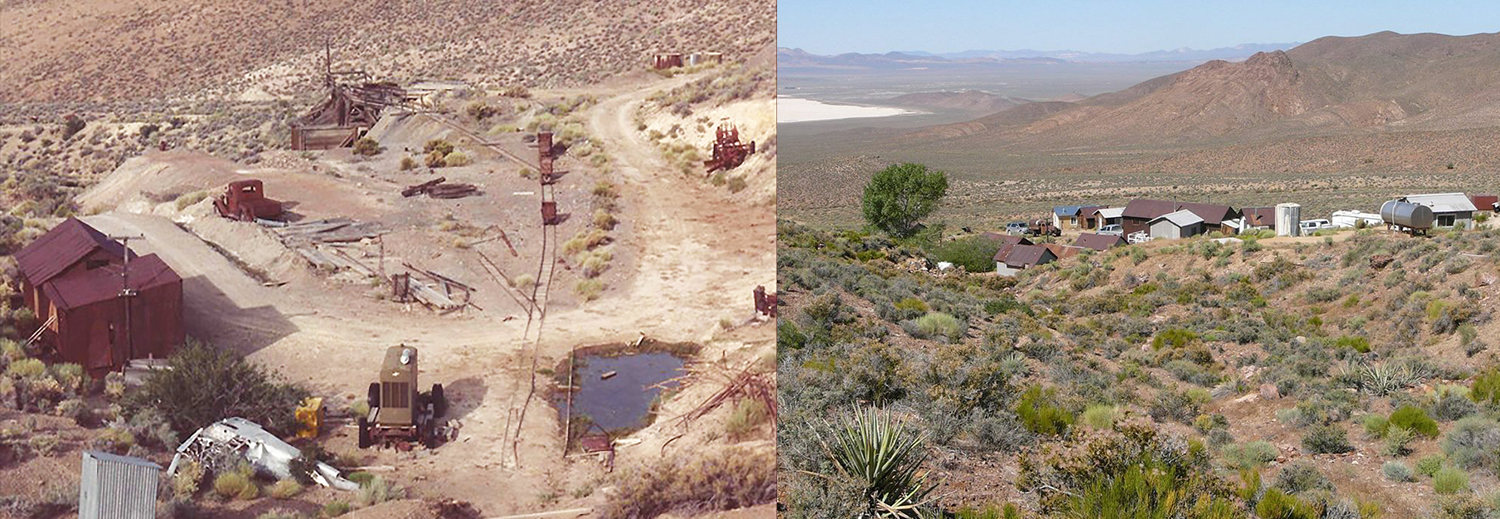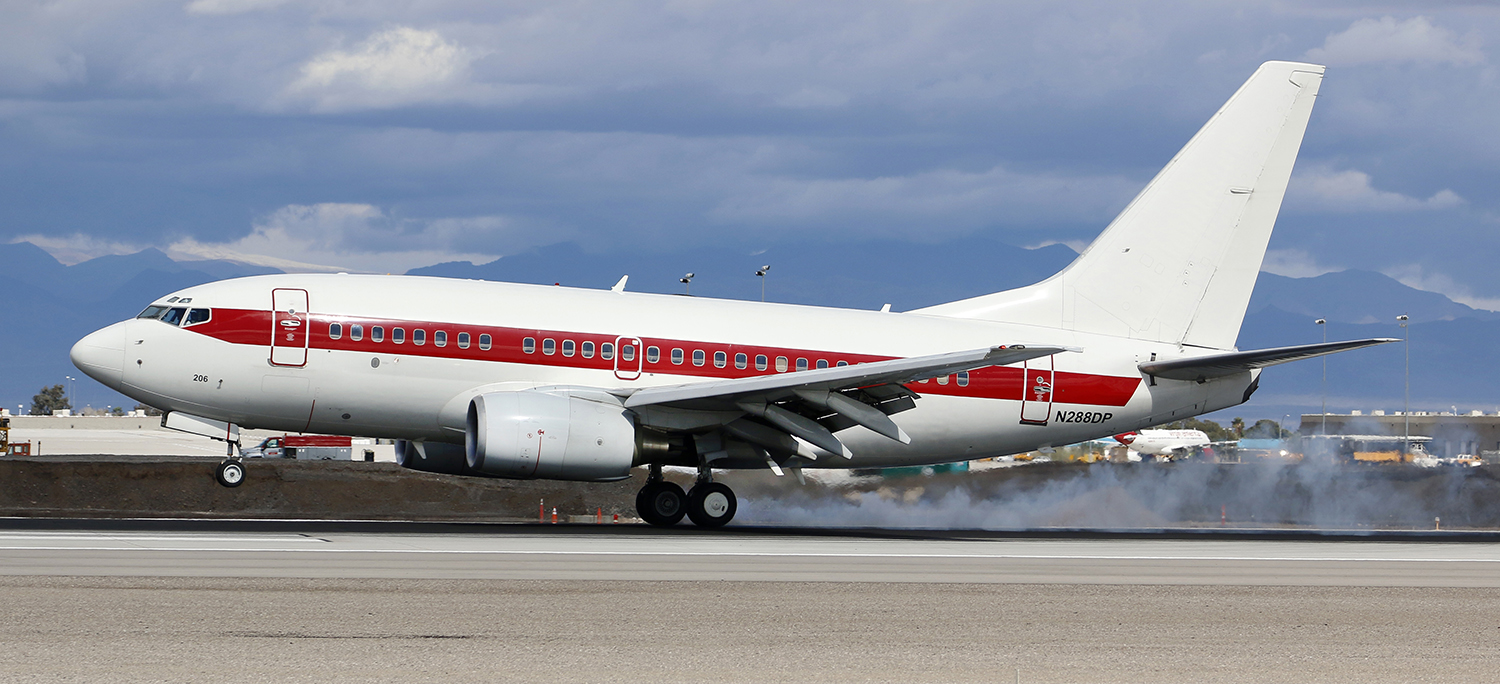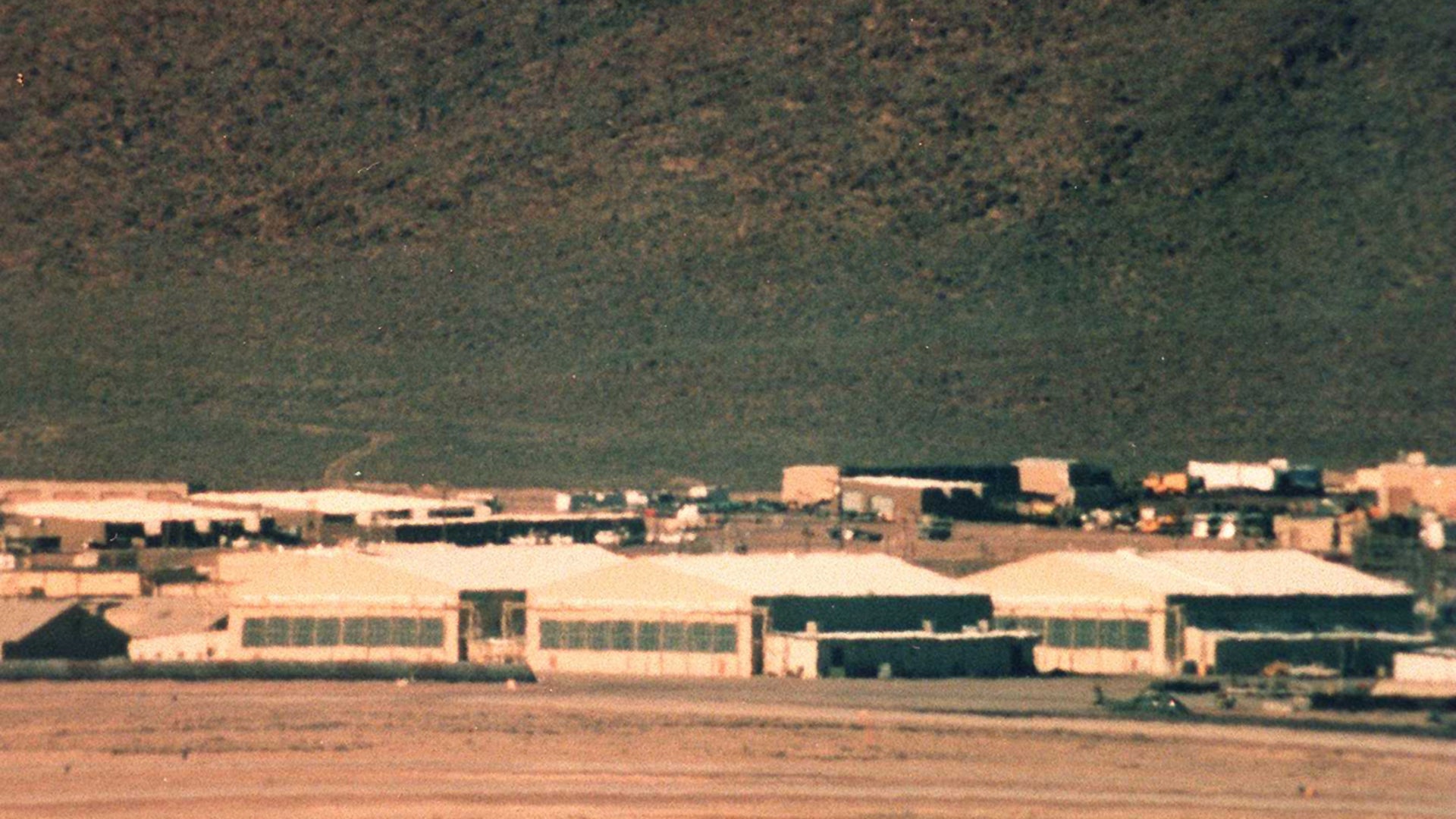As if the situation couldn’t get any more bizarre. Now the family locked in a major land use battle with the USAF over their property that overlooked the air base at Area 51 wants the Air Force to tell them how a 200-pound antique anvil disappeared from the property just weeks after it was officially seized.
The Sheahans have, in one way or another, been fighting the Air Force for decades. You should read all about this more than extraordinary struggle here. But now, more than a year after the property was condemned under eminent domain in the fall of 2015, the issue has come down to what the historic mine is worth. As of late last year, the two parties were as far apart as one can imagine. The USAF drastically dropped what it was willing to pay for the mine to a paltry $333,000, while the Sheahans claim the property could be worth as much as $116 million.
On top of that, the family says that by law all their personal property needs to be relocated from the site on the US Air Force’s dime, a fact that seemed to have been a given when the condemnation process was executed. But now, according to the Sheahans, the Air Force isn’t even going to do that. The family stated the following in a press release:
After seizing the Groom Mine Property from the Sheahan family through eminent domain, the U.S. Government confirmed it would take a small army, many months and $2.7 million to move 130 years worth of family belongings from the property–not including storage fees, incidentals and other unforeseen costs. The Sheahan’s relocation expert agreed that the relocation would take several months, but the cost would be $4.5 million.
The government is now changing its initial position, arguing that it will only take several blocks of three to four days to move the belongings and cost less than $300,000 for both moving and storage. The government claims that this position is justified on the grounds that the mining equipment on the property is considered a fixture that is attached to the land and needs to be valued as part of it, not moved. However, the government initially took the exact opposite position when valuing the land, claiming the mining equipment should not be valued as part of the land, because it is personal property that needs to be moved.
“These grossly inconsistent positions are nothing more than an attempt to outright take our family’s personal property without just compensation,” said Joe Sheahan, one of the property owners.
The government is also refusing to move other items owned by the Sheahan family including a 1929 Model A Ford, a 1936 International truck, antique mining buckets and gears, and similar items. Their excuse for this is that these items are high bulk and low value, although they have not provided a single valuation appraisal on any of these items.
In addition, the government has sent the landowners threatening letters ordering them to remove all of their property within 30 days, while not providing access to do so. This is a clear violation of federal law. To assure that personal property of this type is fully protected, Congress adopted the Uniform Relocation Assistance and Real Property Acquisition Policies Act of 1970 (URA). The URA mandates specific rules to assure the government pays for moving and storage of all personal property and provides a reasonable time to do so. The URA further states that the government is required to provide assistance with the relocation of the personal property “to ensure that persons displaced as a direct result of federal or federally assisted projects are treated fairly, consistently, and equitably so that such displaced persons will not suffer disproportionate injuries as a result of the projects designed for the benefit of the public as a whole” (49 CFR § 24.1.).

The relationship has gotten so contentious between the Sheahans and the Air Force that the family is now demanding answers as to how an antique anvil that weighs 200-lbs could have disappeared within the most highly secured land mass in the world just weeks after the family was evicted from their property that lies within its perimeter.
Less than two months after the Government confiscated the Groom Mine Property, a 100-year-old, 200-lb. blacksmith’s anvil disappeared from the property. The owners noticed the historic anvil was missing shortly after arriving on-site to conduct a personal property review with the U.S. Government’s moving company in November of 2015.
The Government conducted an investigation, but was unsuccessful in recovering this large antique anvil. In spite of the numerous cameras, sensors, guards in Ford Raptors, helicopters and satellites, they still could not find a 200-lb. anvil.
“Was this Area 51 black magic or just plain old theft? Did someone slip it out of the most secret and secure location on the planet in their lunch box?” asked Patrick Sheahan, one of property owners.
The Sheahan’s puzzlement as to how such an ungainly object could have vanished from such a secure locale is totally warranted. It’s an anvil, so we know it didn’t get up and walk away on its own, and the only people who would have access to the mine were presumably those who work at the base or who secure its heavily monitored perimeter. In other words, random hikers didn’t casually rob the place. Also, considering that most of the workers at Area 51 are either flown there or are bussed in daily, the ability to remove the anvil from the secretive installation’s grounds becomes even less plausible.

As sophomoric as it sounds, the historic anvil from the Sheahan’s property—the last private parcel of land with a direct line of sight of the flight test installation at the center of Area 51—would be a nice “victory trophy” for powers that be at the secretive facility. Considering that the place is supposedly littered with test aircraft and is likely the most compartmentalized facility in the US, it’s unclear how exactly the USAF could investigate such an act.
In fact, investigating Area 51 on an official level is next to impossible, as proven by the lawsuit filed by workers that became gravely ill during the 1990s after toxic chemicals were systematically burned in trenches at the base. Before that suit, the base never officially existed. To this day, renewed executive orders are issued by the White House to keep it so classified that it is largely shielded from oversight and the American judicial system.
In other words, the chances that the Sheahans will be seeing their anvil anytime soon are probably as good as you or I receiving a formal invite to come take a personal tour of the installation.
So there you have it, the enigmatic Area 51—a wondrous place that is not only associated directly with aircraft that can disappear, but now also with mysteriously disappearing historical blacksmithing hardware.
Contact the author: Tyler@thedrive.com
